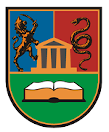Please use this identifier to cite or link to this item:
https://scidar.kg.ac.rs/handle/123456789/18749Full metadata record
| DC Field | Value | Language |
|---|---|---|
| dc.rights.license | CC0 1.0 Universal | * |
| dc.contributor.author | Matić, Aleksandra | - |
| dc.date.accessioned | 2023-08-09T07:54:48Z | - |
| dc.date.available | 2023-08-09T07:54:48Z | - |
| dc.date.issued | 2023 | - |
| dc.identifier.issn | 1820-1768 | en_US |
| dc.identifier.uri | https://scidar.kg.ac.rs/handle/123456789/18749 | - |
| dc.description | Istraživanje sprovedeno u radu finansiralo je Ministarstvo nauke, tehnološkog razvoja i inovacija Republike Srbije (Ugovor o realizaciji i finansiranju naučnoistraživačkog rada NIO u 2023. godini broj 451-03-47/2023-01/ 200198). | en_US |
| dc.description.abstract | This paper explores Rastko Petrović’s last essay entitled Questi Schiavoni, which represents a trilogy about Italian Renaissance artists of Slavic origin. In his recognizable genealogically fluid manner, Petrović shapes three essayistic-documentary texts with historical-novelistic elements, with the aim of illuminating the key features of the brightest era of European art, but also to point out the Slavic participation and importance in building the Italian cultural heritage. Rastko Petrović’s two major themes, Slavism and Renaissance art, intertwine in this essay, created during his stay in America, a fact which activates another narrative and semantic complex in the text: alienation and immigrant experience as a universal ontological quality of the artist’s being. This paper tries to point out the poetic stimuli that came to the avant-garde writer precisely from the Renaissance, and to indicate the intercultural connections and permeations, the importance of which the avant-garde artist emphasized in both his explicit and implicit poetics, proving that intensive communication of ethnically, religiously, geographically distant cultures can be achieved through art. The last segment of the paper follows the so-called Slavic messianism as an idea that Rastko Petrović built upon during his entire creative engagement, mainly dealing with Slavic tribes at cultural and historical epochs turning points. | en_US |
| dc.language.iso | sr | en_US |
| dc.publisher | University of Kragujevac, Faculty of Filology and Arts | en_US |
| dc.rights | info:eu-repo/semantics/openAccess | - |
| dc.rights.uri | http://creativecommons.org/publicdomain/zero/1.0/ | * |
| dc.source | NASLEĐE: časopis za književnost, jezik, umetnost i kulturu | - |
| dc.subject | Italy | en_US |
| dc.subject | renaissance | en_US |
| dc.subject | Slavs | en_US |
| dc.subject | Rastko Petrović | en_US |
| dc.title | „QUESTI SCHIAVONI”: ITALIJANSKA RENESANSA I SLOVENI U DELU RASTKA PETROVIĆA | en_US |
| dc.title.alternative | QUESTI SCHIAVONI: ITALIAN RENAISSANCE AND SLAVS IN THE WORK BY RASTKO PETROVIĆ | en_US |
| dc.type | article | en_US |
| dc.description.version | Published | en_US |
| dc.identifier.doi | 10.46793/NasKg2354.285M | en_US |
| dc.type.version | PublishedVersion | en_US |
| Appears in Collections: | The Faculty of Philology and Arts, Kragujevac (FILUM) | |
Files in This Item:
| File | Description | Size | Format | |
|---|---|---|---|---|
| NASLEDJE 54 2023s-285-301.pdf | 843.55 kB | Adobe PDF |  View/Open |
This item is licensed under a Creative Commons License


